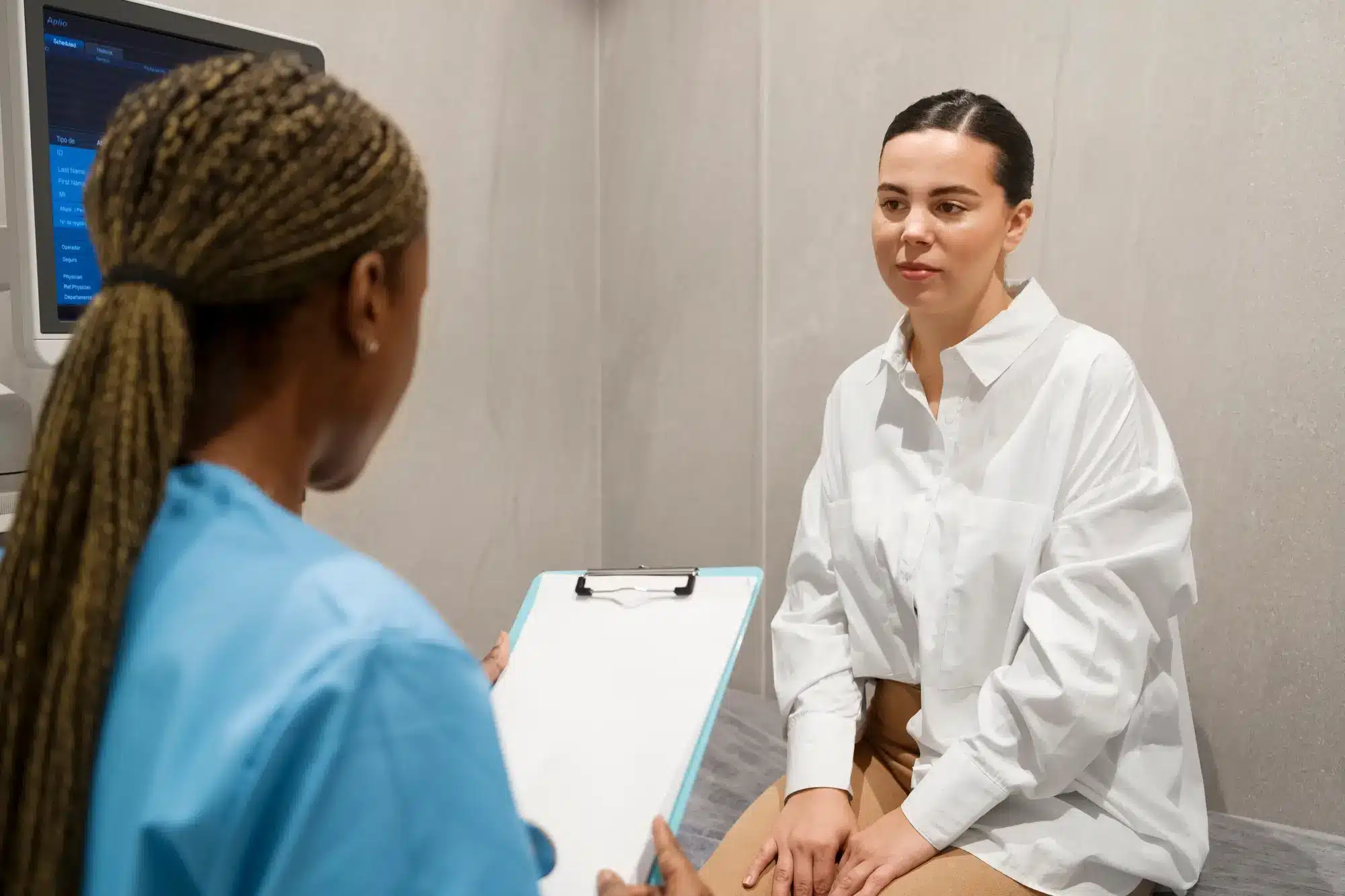
According to the Family Planning 2030 report, 38% of women using modern contraceptives, such as IUDs and implants, discontinue their use for reasons beyond pregnancy planning. These reasons often include side effects, health concerns, and lifestyle changes.
Nexplanon, a widely used contraceptive implant, is known for its high effectiveness and convenience. However, like all birth control methods, it can cause side effects that lead some individuals to consider removal. Understanding what happens after getting Nexplanon is essential for a smooth transition and overall well-being.
In this article, we’ll explore the potential side effects of Nexplanon, what to expect in the weeks following the procedure, and effective ways to manage any changes your body may experience.
Key Takeaways
- Nexplanon may cause irregular bleeding, headaches, breast tenderness, acne, and slight weight gain, which typically improve as the body adjusts.
- Some users experience mood swings, nausea, abdominal pain, and insertion site reactions. These symptoms can affect daily life and may require medical evaluation.
- Rare but severe complications include deep vein thrombosis (DVT), ectopic pregnancy, and device migration. Immediate medical attention is necessary if these occur.
- Regular check-ups, proper patient education, and considering alternative birth control options can help improve user satisfaction and minimize discomfort.
- Hormonal fluctuations and the return of natural menstrual cycles can indicate that the implant’s effectiveness is ending. Consulting a provider can help determine the next steps.
About: Doctor Medica is your trusted supplier of top-quality dermal fillers, viscosupplements, and more for your medical practice. We offer genuine products from leading brands at the lowest prices. If you’re interested in ordering Nexplanon online for your practice, our sales agents at Doctor Medica can help.
Common and Mild Nexplanon Side Effects

Most Nexplanon users experience mild side effects, which typically subside over time as the body adjusts to the implant. These include:
- Menstrual Changes: The most commonly reported side effect is irregular bleeding. Some users may have prolonged or shorter periods, spotting, or even stop having periods altogether (amenorrhea).
- Headaches and Breast Pain: Some women experience mild to moderate headaches and breast tenderness, similar to symptoms associated with hormonal fluctuations.
- Acne and Weight Gain: Hormonal changes may lead to increased acne or slight weight gain. However, weight changes are usually minimal and depend on individual metabolic responses.
Although these side effects are generally manageable, it is essential to track symptoms and discuss concerns with a healthcare provider if they persist.
Moderate Nexplanon Side Effects
While less common than mild reactions, moderate side effects can affect quality of life and may require medical attention.
- Mood Changes: Some users report mood swings, increased anxiety, or depression. While hormonal fluctuations can influence emotions, severe mood disorders should be evaluated by a healthcare provider.
- Abdominal Pain and Nausea: Some women experience gastrointestinal discomfort, including bloating, cramps, or nausea, though these symptoms usually subside.
- Insertion Site Reactions: Pain, bruising, redness, or mild swelling at the implant site are common after insertion. In rare cases, infections can occur, requiring medical treatment.
If these side effects become disruptive, a healthcare professional may suggest lifestyle adjustments or alternative contraceptive methods.
Severe and Rare Nexplanon Side Effects
Although rare, some Nexplanon users may experience severe side effects that require immediate medical attention.
- Deep Vein Thrombosis (DVT): Nexplanon slightly increases the risk of blood clots. Symptoms such as leg swelling, pain, or redness should be evaluated immediately, as untreated DVT can lead to serious complications.
- Ectopic Pregnancy: Although Nexplanon is highly effective, in rare cases where pregnancy occurs, there is a higher risk of an ectopic pregnancy, which requires urgent medical intervention.
- Device Migration: In rare cases, the implant may shift from its original location. If the implant becomes challenging to locate or causes unusual pain, medical imaging may be required to determine its position.
Patients experiencing any of these symptoms should seek medical help immediately.
Managing Nexplanon Side Effects

Understanding how to manage Nexplanon’s side effects can enhance overall satisfaction with the contraceptive implant.
- Patient Counseling: Healthcare providers should educate users on potential side effects before insertion, setting realistic expectations to prevent unnecessary concerns.
- Monitoring and Follow-Up: Regular check-ins with a doctor allow for tracking symptoms, assessing side effects, and determining whether continued use is appropriate.
- Alternative Contraceptive Methods: If side effects become persistent or intolerable, exploring other birth control options, such as IUDs or different hormonal methods, may be beneficial.
Proactive management and open communication with a healthcare provider are essential for handling side effects. Additionally, those approaching the end of their implant’s lifespan should be aware of the Nexplanon expiration symptoms, such as hormonal fluctuations or a return to pre-implant menstrual cycles. Consulting a provider can help determine the next steps, whether it’s reinsertion or switching to a different contraceptive method.
Conclusion
Nexplanon provides reliable, long-term contraception, but users should be informed about potential side effects, ranging from mild adjustments to rare but serious complications. While most symptoms resolve as the body adapts, ongoing monitoring and open communication with a healthcare provider are essential for addressing concerns.
Regular follow-ups, proactive symptom management, and exploring alternative contraceptive options when needed can help ensure a positive experience and optimal reproductive health.
FAQs
1. How long do Nexplanon side effects last?
Most side effects, such as irregular bleeding and mild headaches, improve within the first few months as the body adjusts. However, some symptoms may persist throughout the implant’s lifespan.
2. Can Nexplanon cause weight gain?
Weight gain is possible but not guaranteed. Some users report minor weight changes, often influenced by lifestyle factors such as diet and exercise.
3. What should I do if I experience severe mood changes on Nexplanon?
If you notice significant mood swings, anxiety, or depression, consult your healthcare provider. They may suggest monitoring, therapy, or considering an alternative contraceptive method.
4. Can Nexplanon be removed early if side effects are severe?
Yes, Nexplanon can be removed anytime if its side effects become intolerable. Discussing concerns with a healthcare provider can help determine the best action.
References
Contraceptive Discontinuation: Reasons, Challenges, and Solutions – Family Planning 2030. www.fp2030.org. https://www.fp2030.org/resources/resources-contraceptive-discontinuation-reasons-challenges-and-solutions/
What Happens After Birth Control Implant Removal? www.plannedparenthood.org. https://www.plannedparenthood.org/learn/birth-control/birth-control-implant-nexplanon/what-happens-when-the-birth-control-implant-is-removed
Related Articles
Joanna Carr
Profhilo Facial Treatment – Tissue Remodeling and Skin Laxity
Profhilo is a facial treatment that uses stabilized hyaluronic acid to remodel tissue and improve skin laxity.
Joanna Carr
Dysport for Smile Lines: Addressing Nasolabial Folds with Neurotoxin Treatment
Explore how Dysport works to treat smile lines, including its benefits and how it compares to other neurotoxin treatments.
Joanna Carr
SoftFil with Fillers – Which Fillers to Use With Which Cannula
Discover the best fillers to use with SoftFil cannulas for optimal results. Learn about different filler types and their compatibility with various ca...


